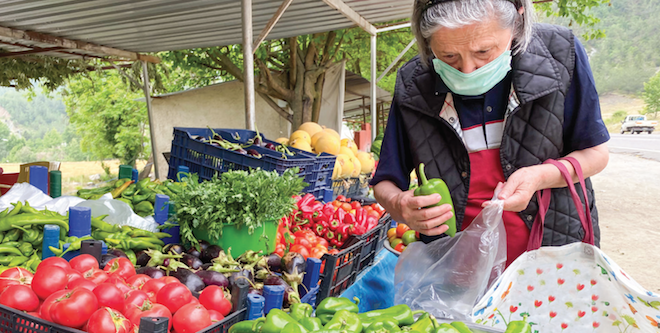

Aug 17, 2020Trust, transparency become more important than ever for farm markets
In the wake of COVID-19, we have all witnessed the impact on our food system. More importantly, so has the consumer. The average consumer got a front-row view of how long supply chains work or in this case, did not work very well. Our food production is split with roughly half going to retail, and half going to institutions and restaurants.
Consumers started asking questions about how our food is produced when they saw empty shelves in the grocery store along with images of farmers plowing produce back into the ground because their institutional sales no longer existed.
Our farm markets have short supply chains so most did not experience much, if any, disruption. Products are produced at our farm, our neighbors or locally. Besides changing how markets operate (maskwearing, limited number of people shopping, online ordering), farmers’ markets and on-farm markets had a
consistent supply that quickly drew new customers to our markets. The question now is; will they stay?
Consumer habits had to change not only because of the disruption of the supply chain and the closer of restaurants, but also because of their own economic issues due to high unemployment. It led to more meals cooked at home, more meal planning, food sourced from multiple outlets and more bulk purchases.
At their core, markets not only provide food, they also solve problems for their community. I have witnessed several examples.
Some markets have added the ability to take SNAP (Supplemental Nutrition Assistance Program) benefits. Others have looked to offer produce seconds at a reduced price. With restaurants being closed, some have put together meal packages that people can take home and prepare while others have offered or expanded their community-supported agriculture program. Recent research shows consumers use an average of four different types of sources to browse recipes and use between two and four devices to develop shopping lists. That’s right, shopping lists have returned with less impulse purchasing.
Online ordering is here to stay, so look to creating efficiencies in order fulfillment and improving the shopping experience. Use social media to highlight what is happening on your farm and market to show transparency. Who is the baker of that delicious quiche at the market? Who is harvesting what today? Consider adding recipes to your online store. According to “Whisk for Business,” more than half of online shoppers are planners and will search recipes before making purchasing decisions.
Consumers have placed a greater priority on health, wellness and fresh produce. They are seeking fruits and vegetables that will keep, such as potatoes, carrots and apples.
Still, all this comes down to knowing who is shopping at your market and why. We’ve built relationships with our regular customers, so now we need to know the new ones. We need to know why they come to the market and what they would like to see. That also means telling our story about our farm and our market – and the people we partner with – to build the customer’s trust by being transparent about our business.
— Brian Moyer, Penn State Extension














